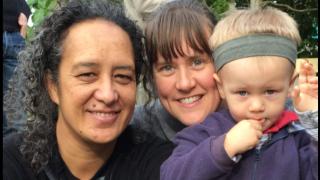- Home
- News
- Screening Matters, Issue 53, August 2015
- Screening follow-up identifies Nikau’s profound deafness
News
- Screening Matters Newsletter
- April 2019
- April 2018
- December 2017
- August 2017
- April 2017
- December 2016
- October 2016
- March 2016
- November 2015
- August 2015
- June 2015
- April 2015
- February 2015
- December 2014
- October 2014
- August 2014
- June 2014
- April 2014
- February 2014
- December 2013
- October 2013
- August 2013
- June 2013
- April 2013
- February 2013
Screening Matters
The National Screening Unit newsletter
In this issue:
- Screening follow-up identifies Nikau’s profound deafness
- Impartial, balanced information allows women to make informed breast screening choices
- Cervical Screening Awareness Month: Cervical screening - the best not nice thing you can do!
- Free ‘pop-up’ cervical smear clinics proving popular with priority Auckland women
- RSS feeds now available for National Screening Unit programme coverage reports
- Correct labelling of cervical smear specimens essential
- Work underway to further strengthen National Cervical Screening Programme – Minister
Screening follow-up identifies Nikau’s profound deafness

‘It was a huge surprise and we tell everyone we’re so lucky he was born at a time when we have newborn hearing screening,’ says Katie. ‘Without it he would have been much more delayed in his speech development because, until then, we’d had no indication he was deaf.
‘He was responding to us in the way a hearing child would and picked up on all the visual cues. The dog would bark right beside him and he wouldn’t respond, but I’d read that babies often don’t react to sounds they were used to hearing in pregnancy, so we put it down to that. We just thought he was an easy baby when it came to noise.’
Like most newborns, Nikau’s first hearing screening test was in the maternity ward when he was about 12 hours old. Katie, a former paramedic, didn’t know about hearing screening and was nervous that it might be invasive.
‘Fi and I had discussed all the other tests but she’d just popped out when the newborn hearing screener arrived, so I was on my own and exhausted. But the screener explained the test was quick and painless and that babies often slept through it, so I was happy for him to have it.’
That test did not have a clear response so Nikau had a follow-up screening test a couple of weeks later at a clinic near the family’s home on the Kapiti Coast.
Because Nikau was awake and wriggling, that test did not have a clear response either and Nikau was referred to the audiology department of Wellington Hospital for a full auditory brainstem response (ABR) test. This measures the neurological responses of the auditory nerve and the auditory pathway to the brain.
Katie says it would have been very easy not to go to that appointment. ‘Nikau hated being in the car and I really didn’t want to take him all the way into Wellington to have electrodes attached to his head for two hours. It also never occurred to us that he might be deaf, so I think I took him because I was a new mother and that’s what I was supposed to do.’
Katie phoned Fi at work with the news that Nikau was profoundly deaf in both ears. ‘It took a while to decipher what Katie was saying because she was so distraught,’ says Fi.
The couple say they were ‘quite devastated’ for a few days, but pretty quickly changed their attitude and began learning sign language.
‘We knew he couldn’t receive his cochlear implants until he was older and we wanted to be able to communicate with him straight away,’ says Fi.
Following a confirmation ABR test a couple of weeks later, Nikau received hearing aids, which made no difference to his hearing. He also didn’t like wearing them and would pull them out, but the couple persisted.
‘We were told it was important for him to keep using the hearing aids because they stimulate the auditory nerves, which is important for the cochlear implants to work well,’ says Fi.
Nikau had bilateral cochlear implants at 10 months, and the couple say ‘switch on' day was an amazing experience.
‘As far as we can tell, his hearing is as good as can be achieved with a cochlear implant,’ says Katie. ‘Every time his language and comprehension has been tested, he’s at least six months to a year above the level of hearing-aged children.’
The family still use sign language for those times when Nikau’s transmitters can’t be used, such as when he’s swimming or showering. ‘It also takes a lot of his energy to interpret the sounds, and sometimes, at the end of the day, he will take them off,’ says Fi.
‘Knowing sign language means we can converse with other people in the deaf community. It’s opened up a whole new language and community to us. It’s important for Nikau to see deaf adults who are signing, doing well and contributing to their communities.’
Katie, who has decided to research the psychosocial outcomes of children with cochlear implants for her PhD, says the family is so grateful Nikau’s deafness was picked up through screening and audiology follow-up.
‘Because he’s so good at picking up on the social cues, without that follow-up it could have been some time before we realised he was deaf and he would have taken so much longer to catch up.’
To receive the Screening Matters newsletter by email, fill out our sign-up form.

